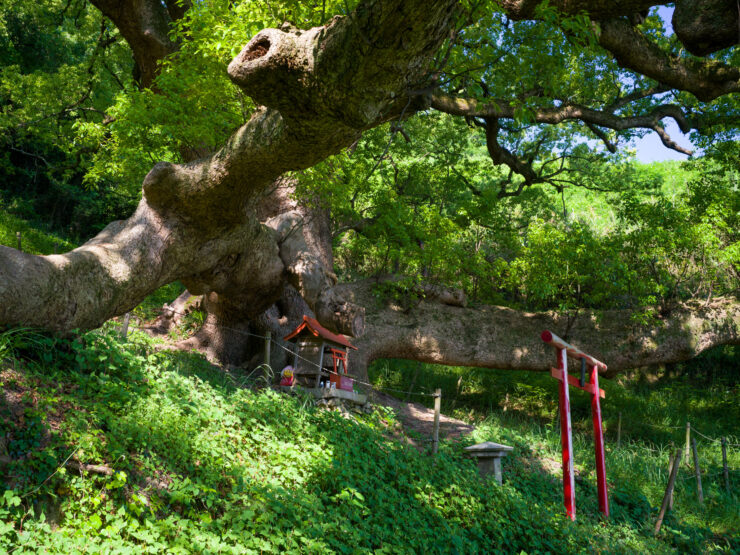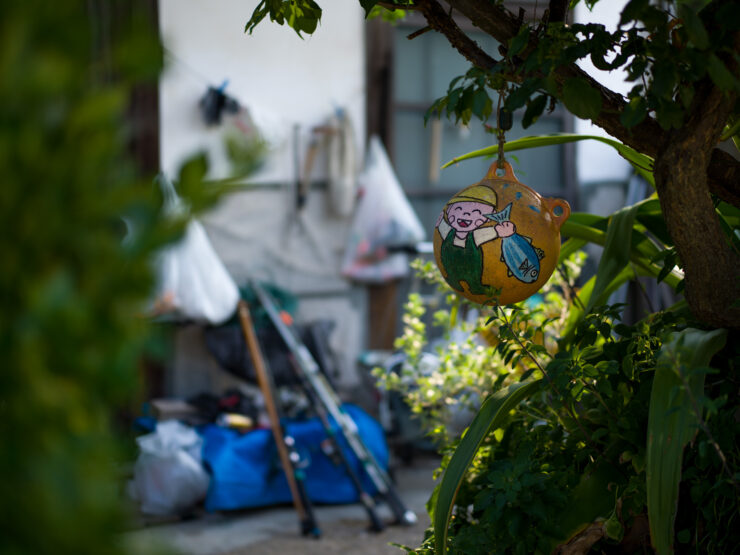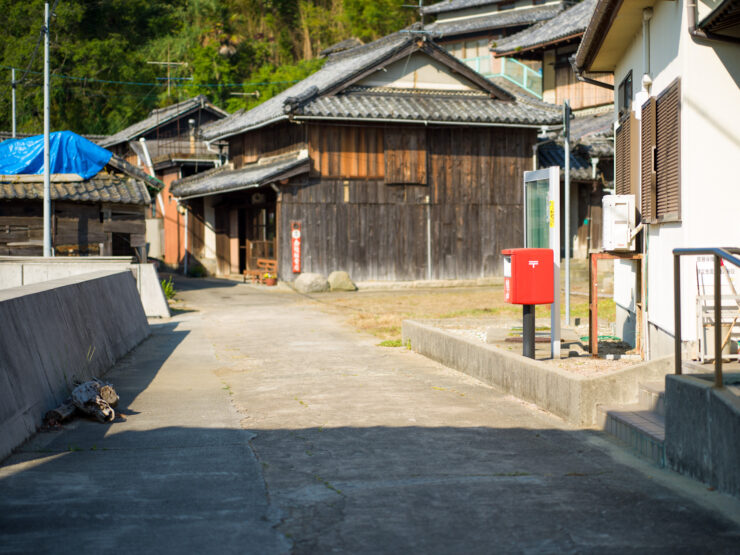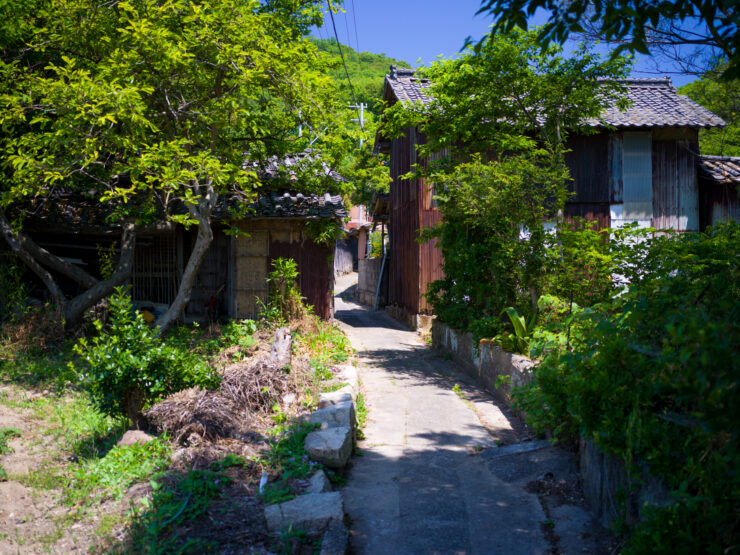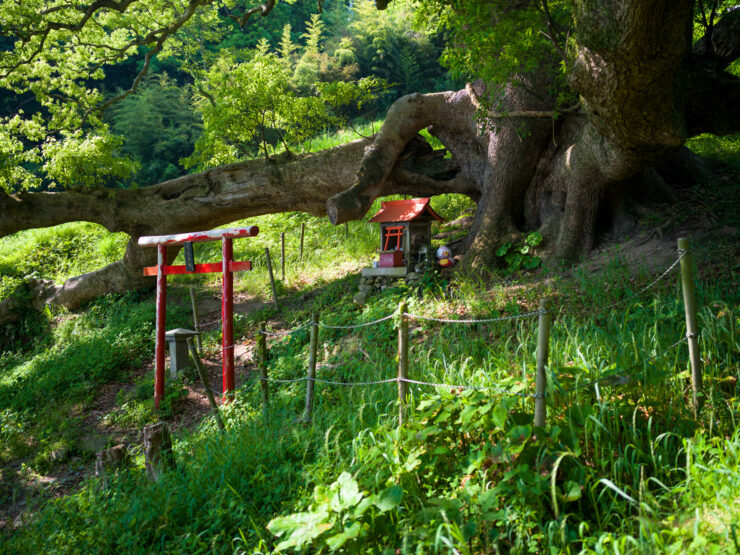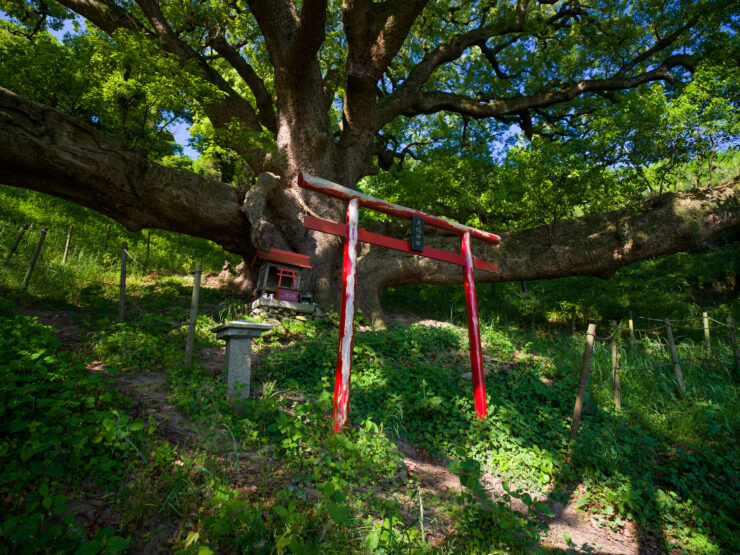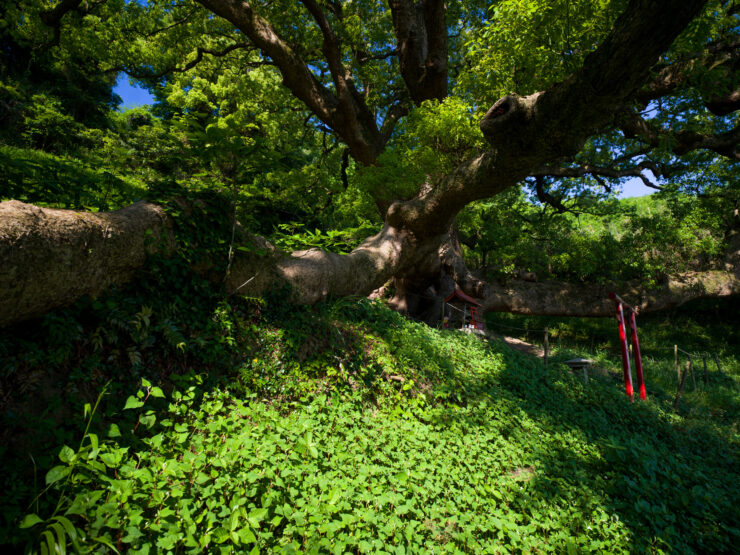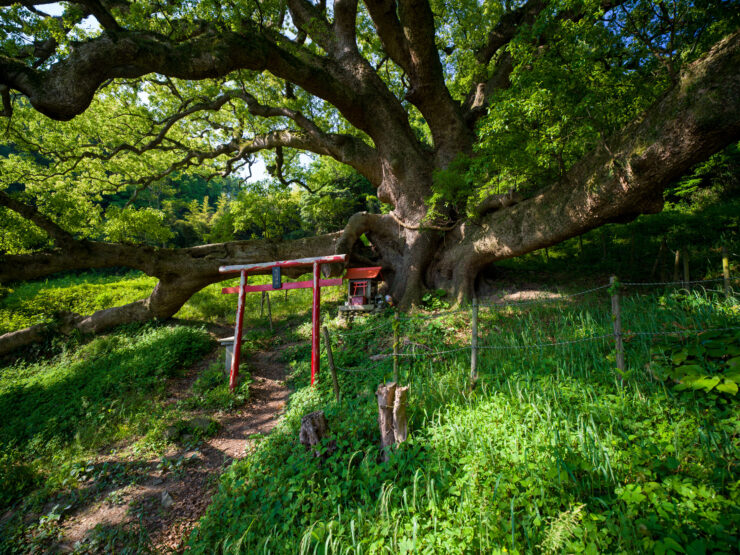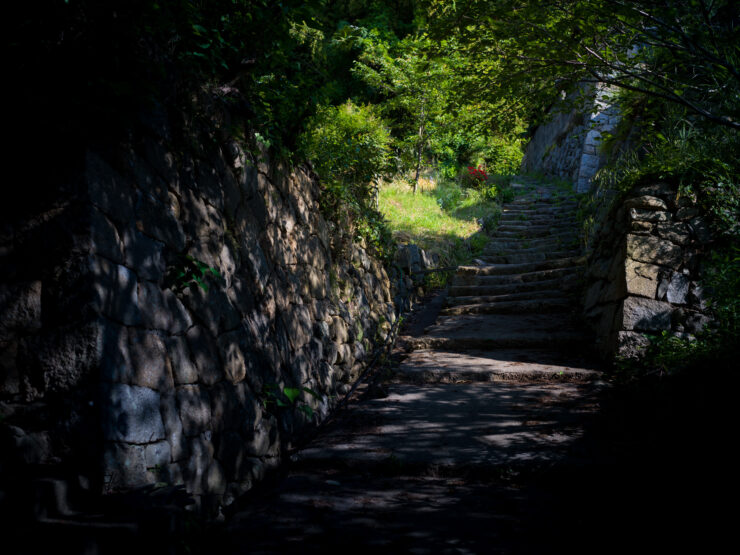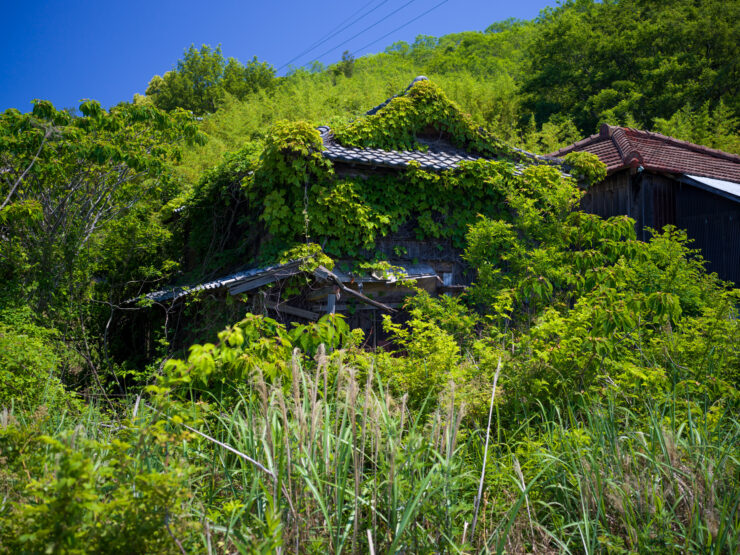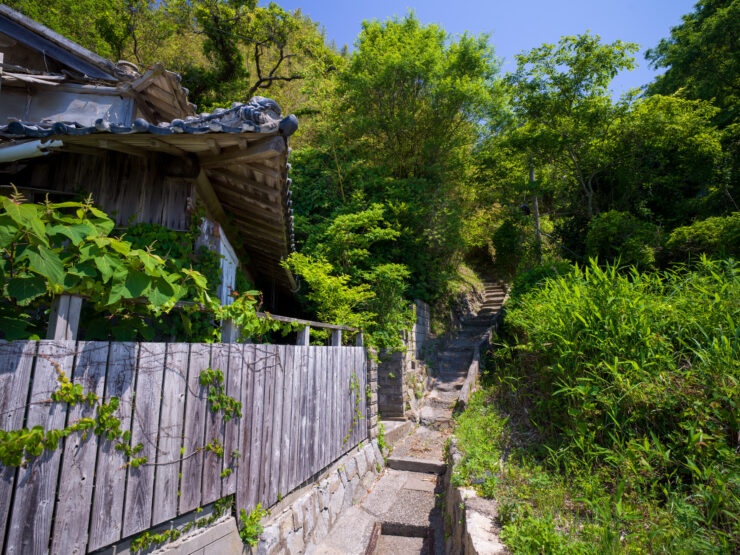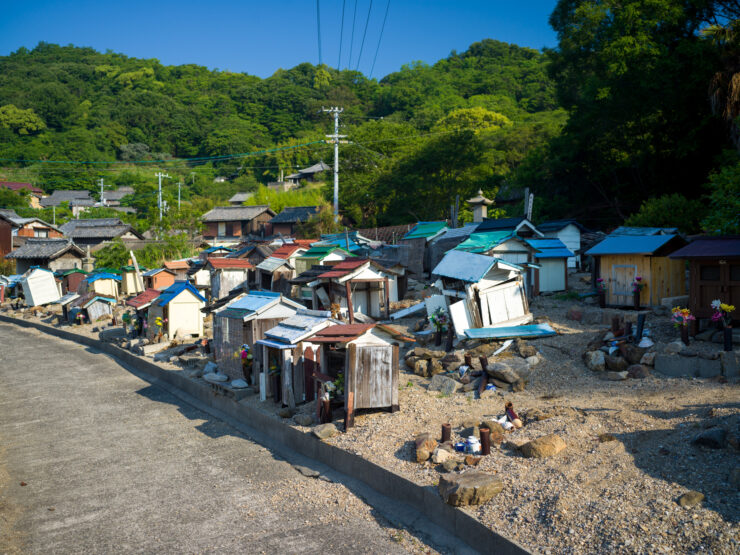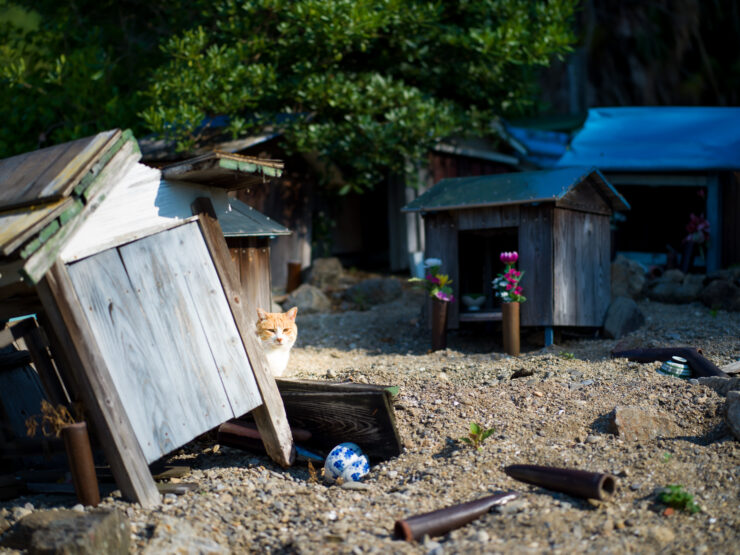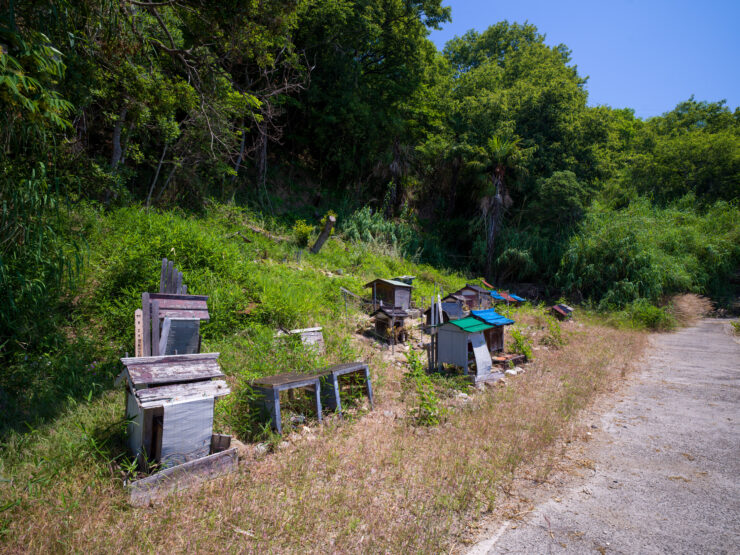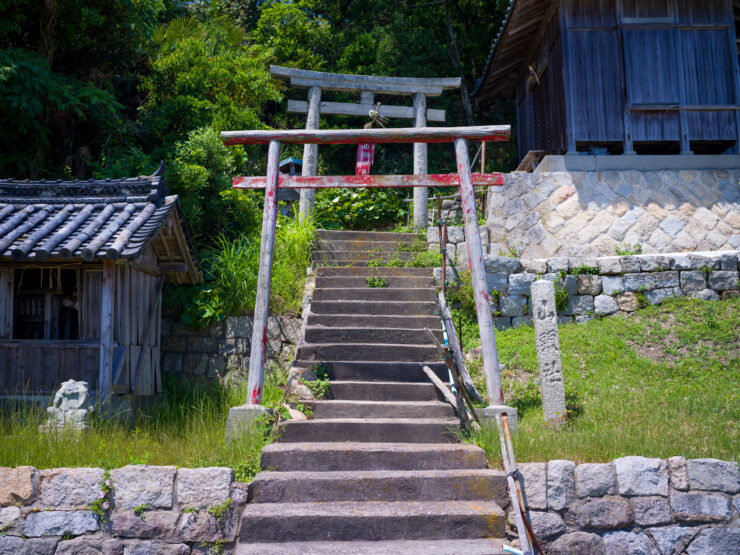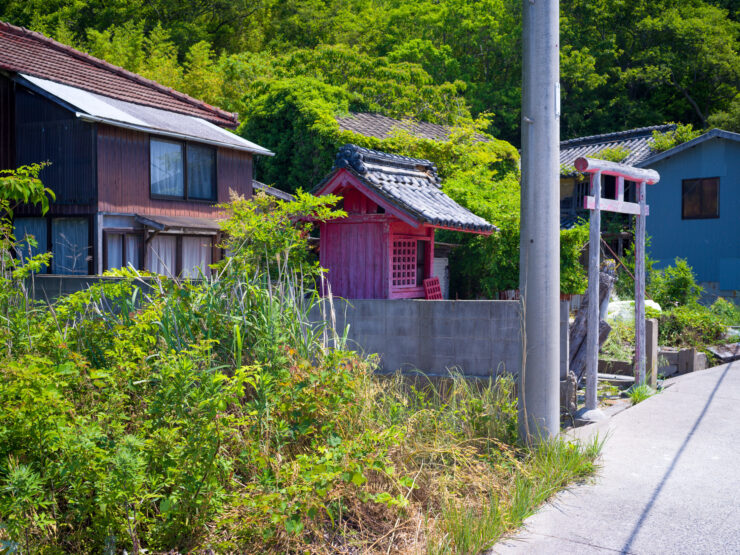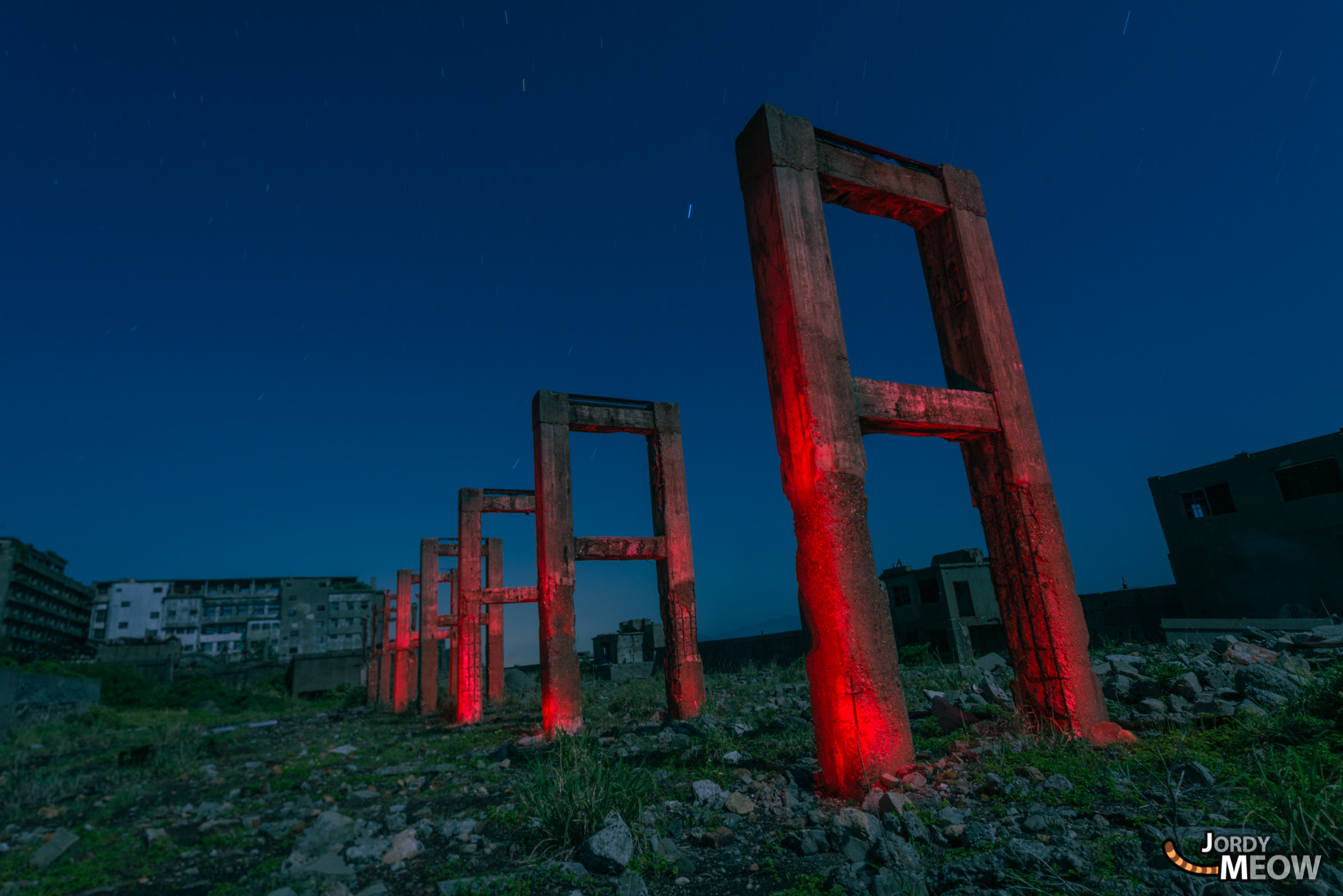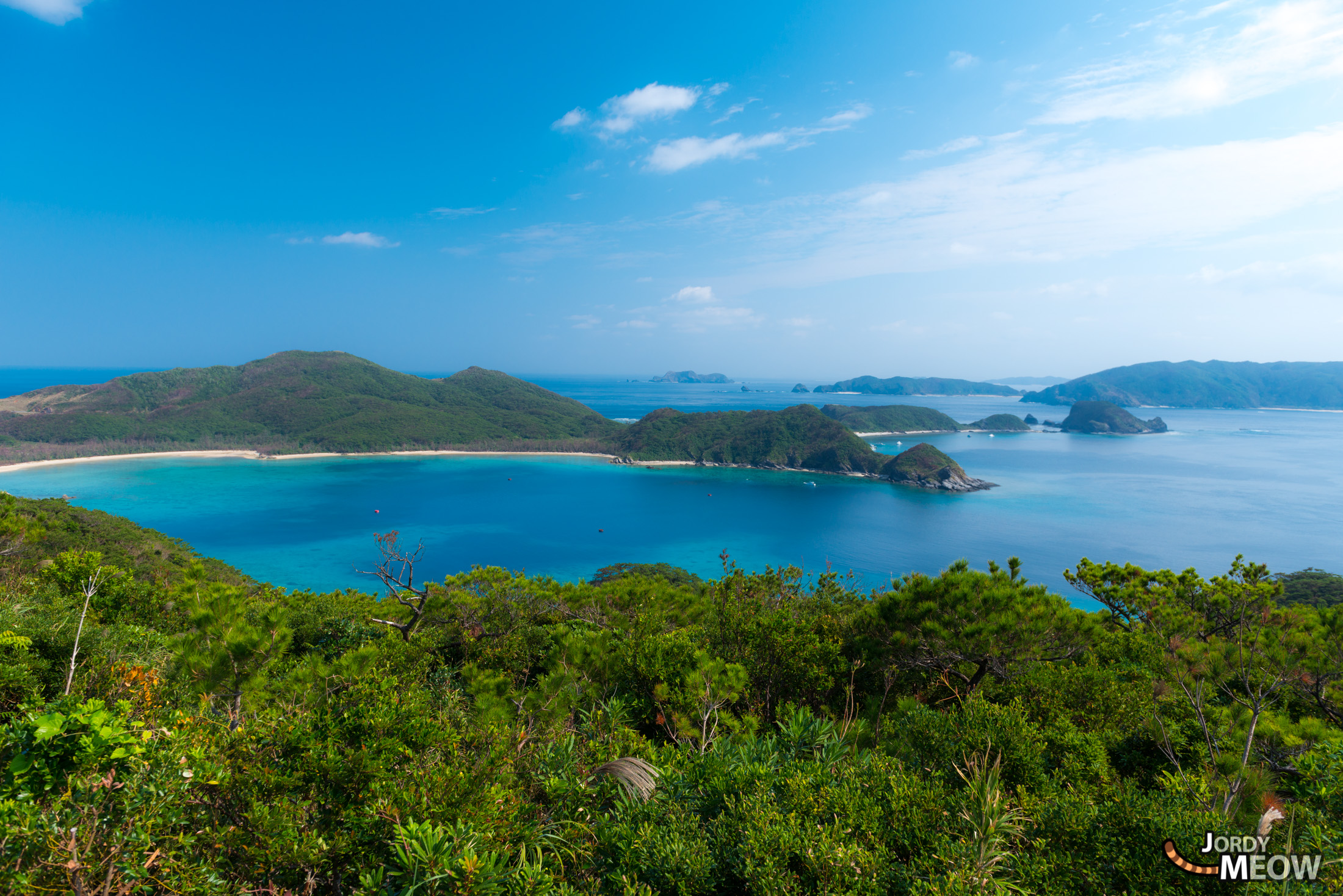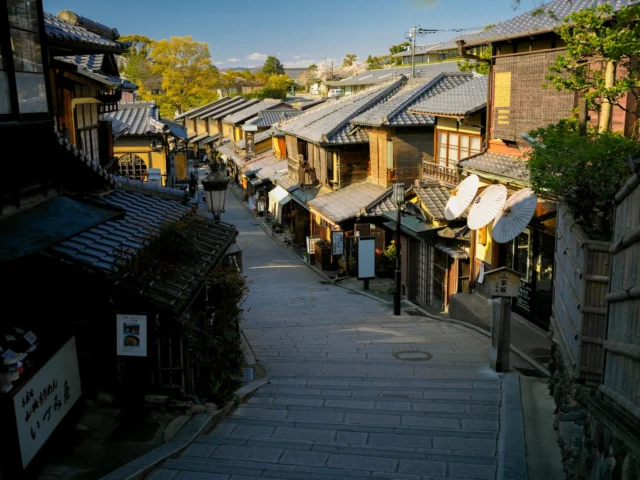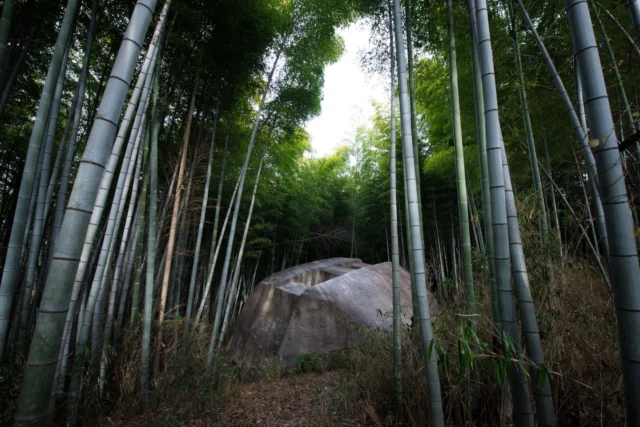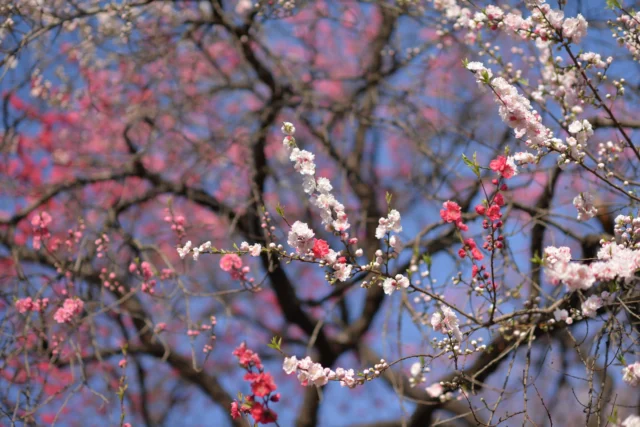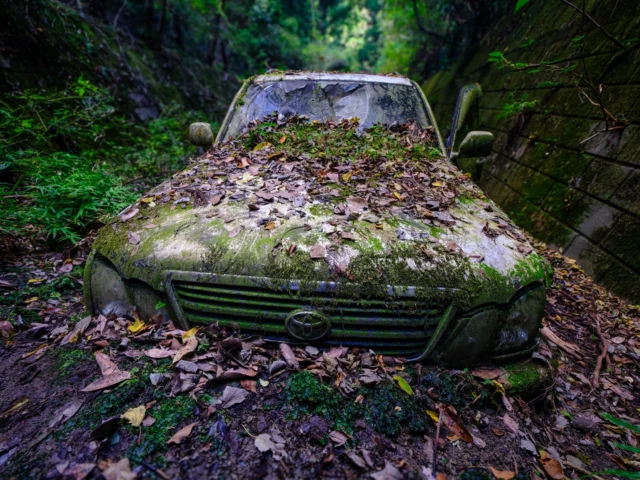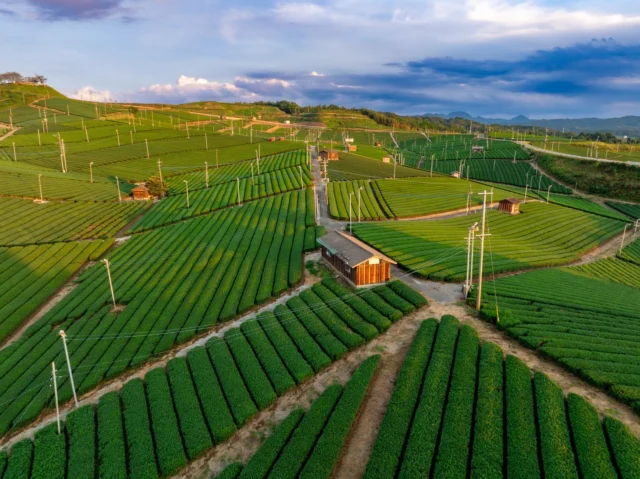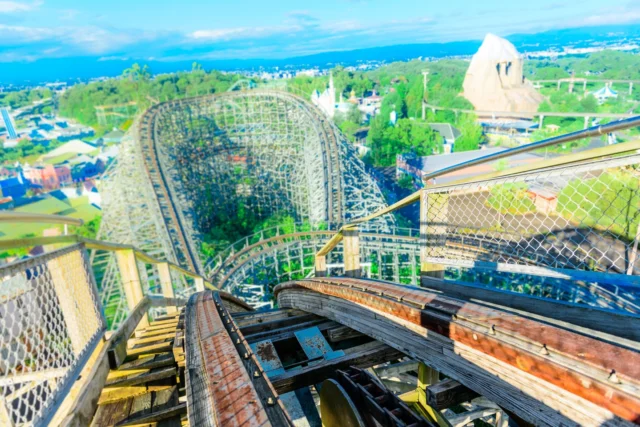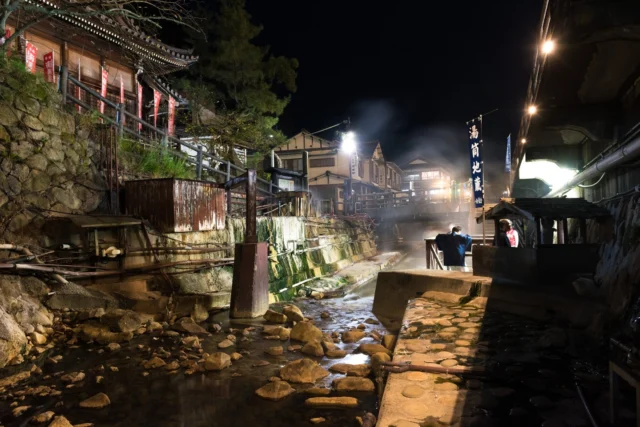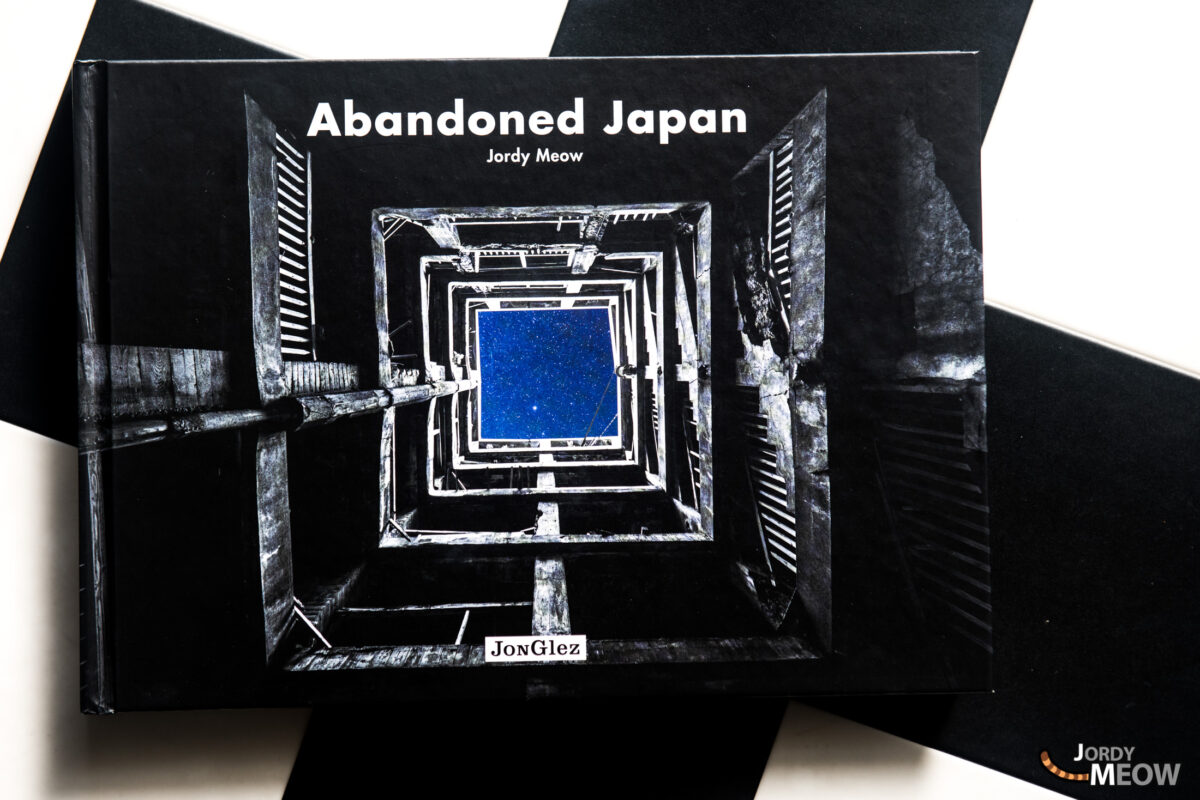I’d settled down for two weeks in Mitoyo in a MeowBNB, specifically on the Shonai peninsula. The whole area is delightful, but today I’m taking you to a rarely visited island! Just 15 minutes by boat from Shonai, here we are at Shishijima (志々島).
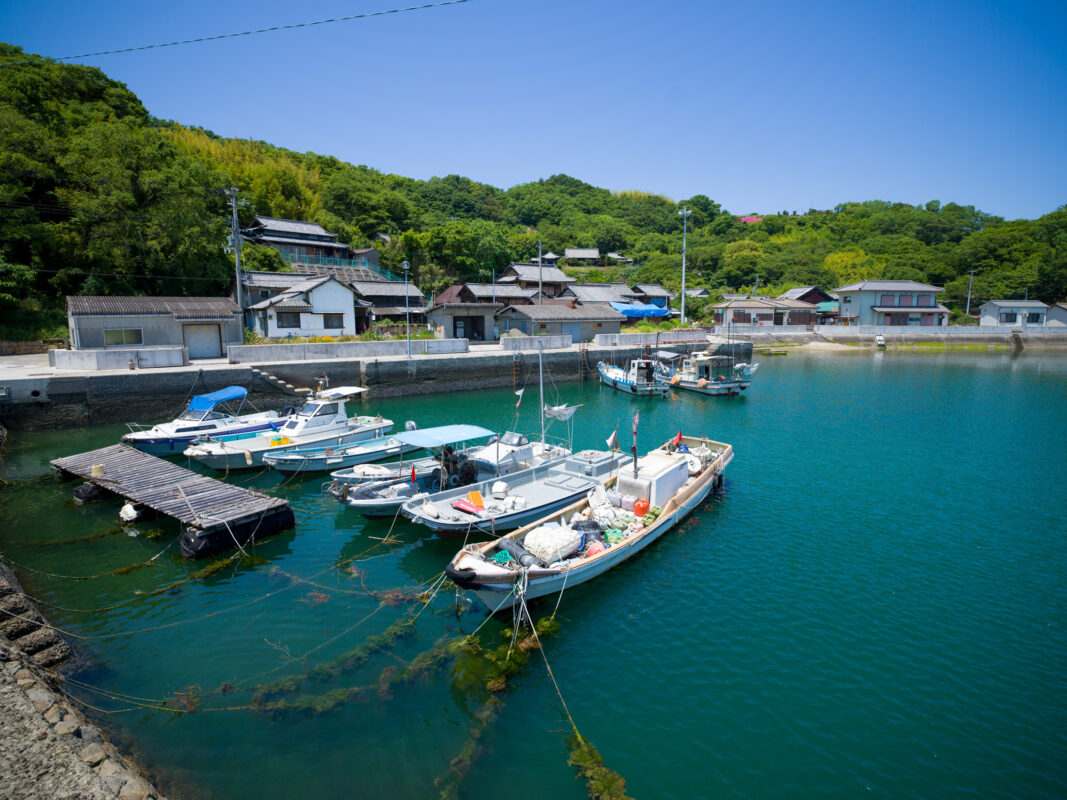
The island is very small, like many others in the Seto Inland Sea, scarcely 3.8 km in circumference. In its heyday the population was over 1,000. But people have continued to drift away and there are just 19 of them still calling the island home (as of 2020). No cars, no convenience stores or restaurants, just the sweet scent of the Showa period of Japanese history (1926–89).
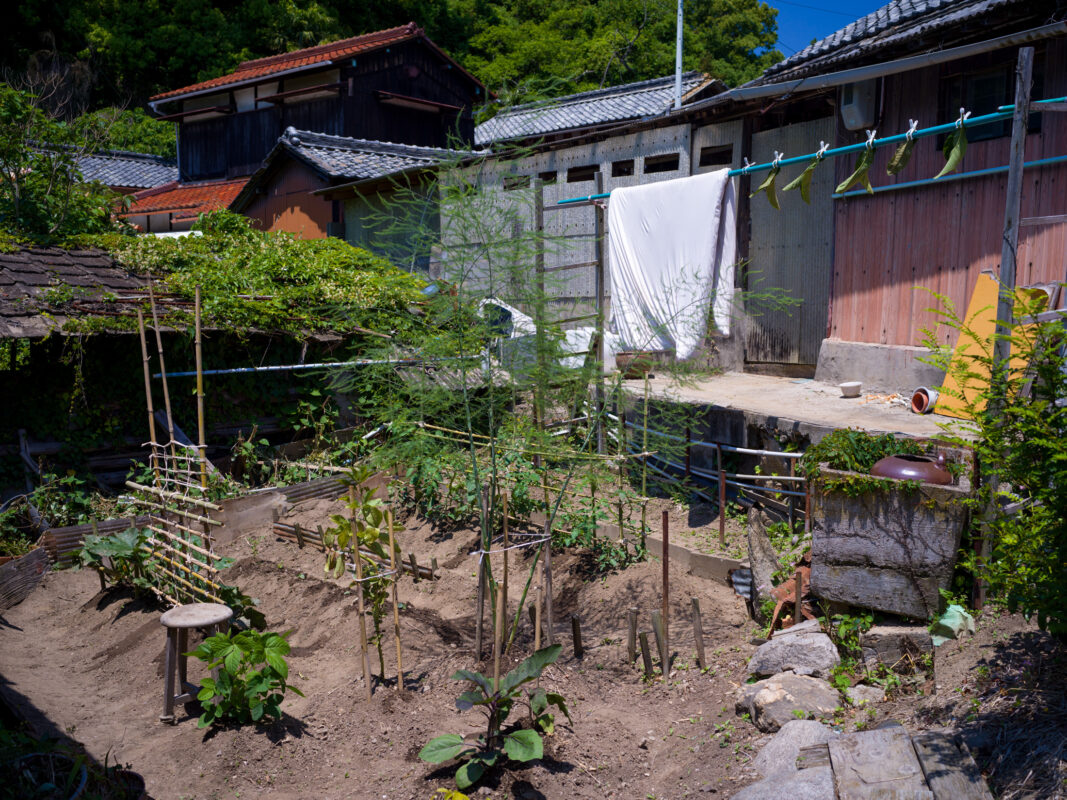
Wealth of seafood and marigolds
With the surrounding sea offering fine fishing grounds, the industry flourished from the Edo (1603–1867) to the Taisho (1912–26) periods, and the region was once known as the “Golden Island” for its treasure trove of sea bream and Spanish mackerel. After the Second World War the focus was on the cultivation of flowers such as marigold (calendula) and pyrethrum. There were over 100 growers at the time.

Today, however, due to relocation and an ageing population, there are no more flower farms on the island, and many fields of flowers have disappeared. But the Garden of Flowers in the Sky (天空の花畑), created by a grandmother who lives on the island with her son and daughter-in-law, is still there. As the blooms were fading at the time of my visit, I chose instead to tune into some abandoned sanctuaries.
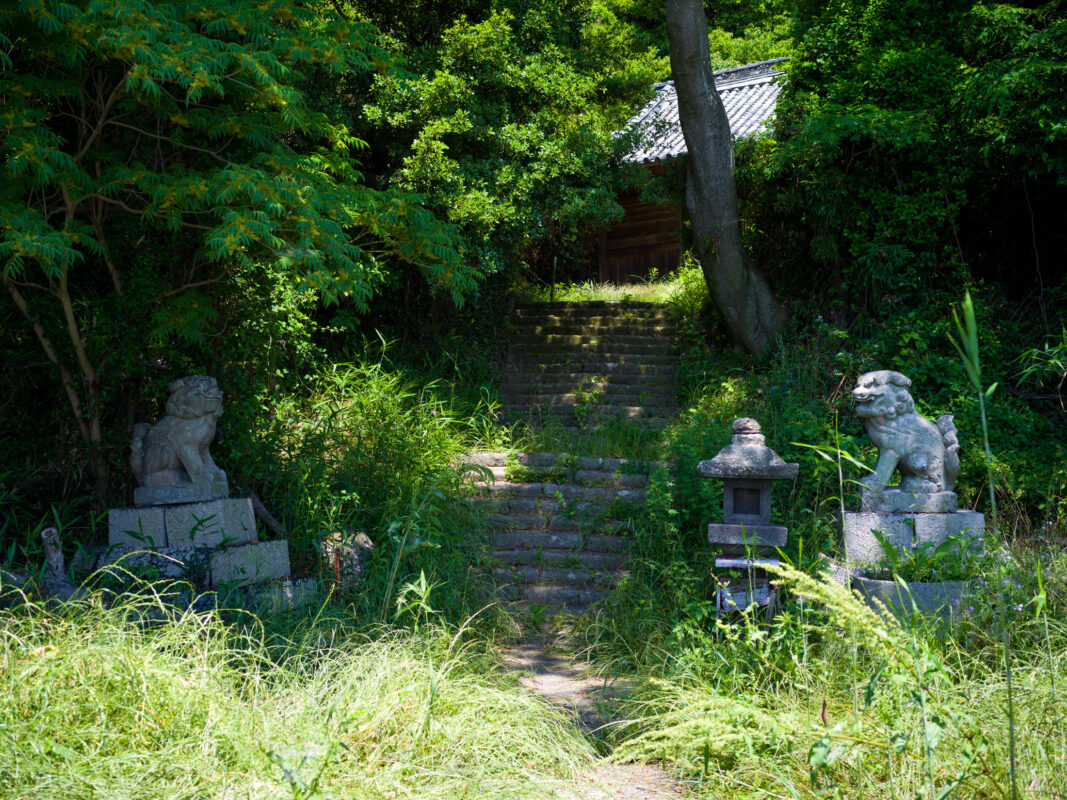
The giant camphor tree
The main attraction of the island is the giant camphor tree known as Okusu (志々島の大くす). Follow your feline guide! The island isn’t very touristic, so first you have to lose yourself … in order to discover! 🧐
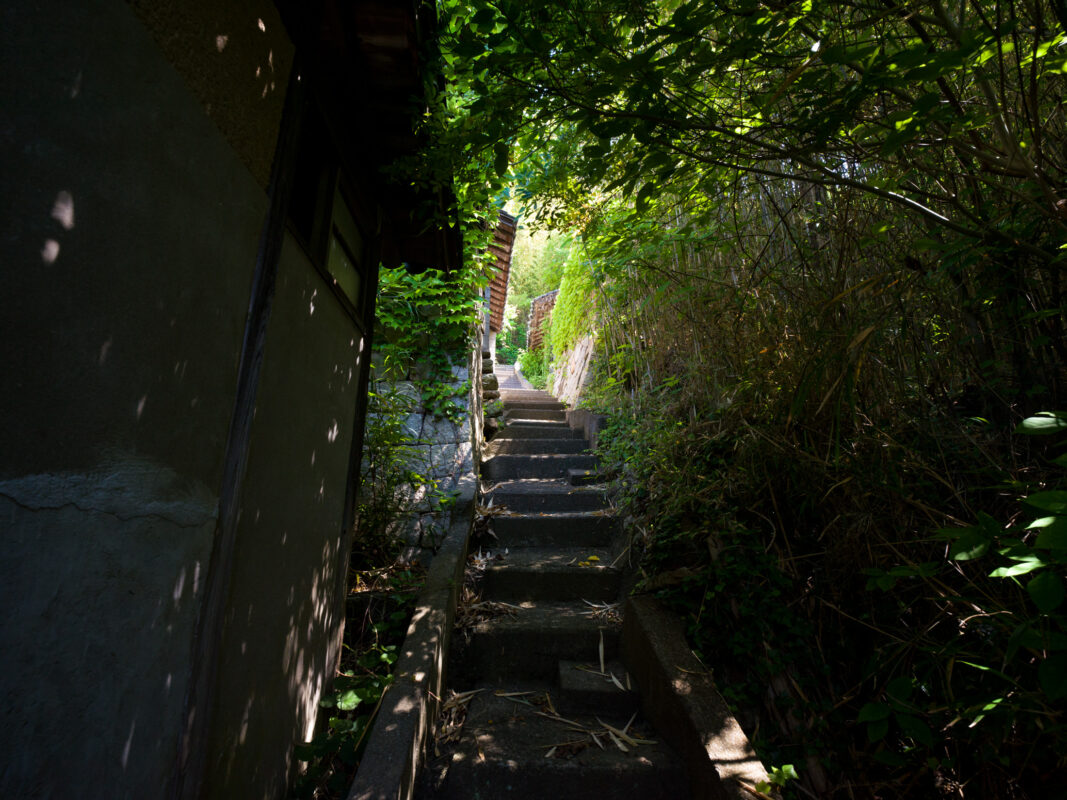
After climbing a precipitous slope and hiking through a forest teeming with pernicious insects, I finally reach a clearing. In the centre stands an extraordinary tree, on which the sun sends the light swirling in all directions. This is the Okusu camphor tree.
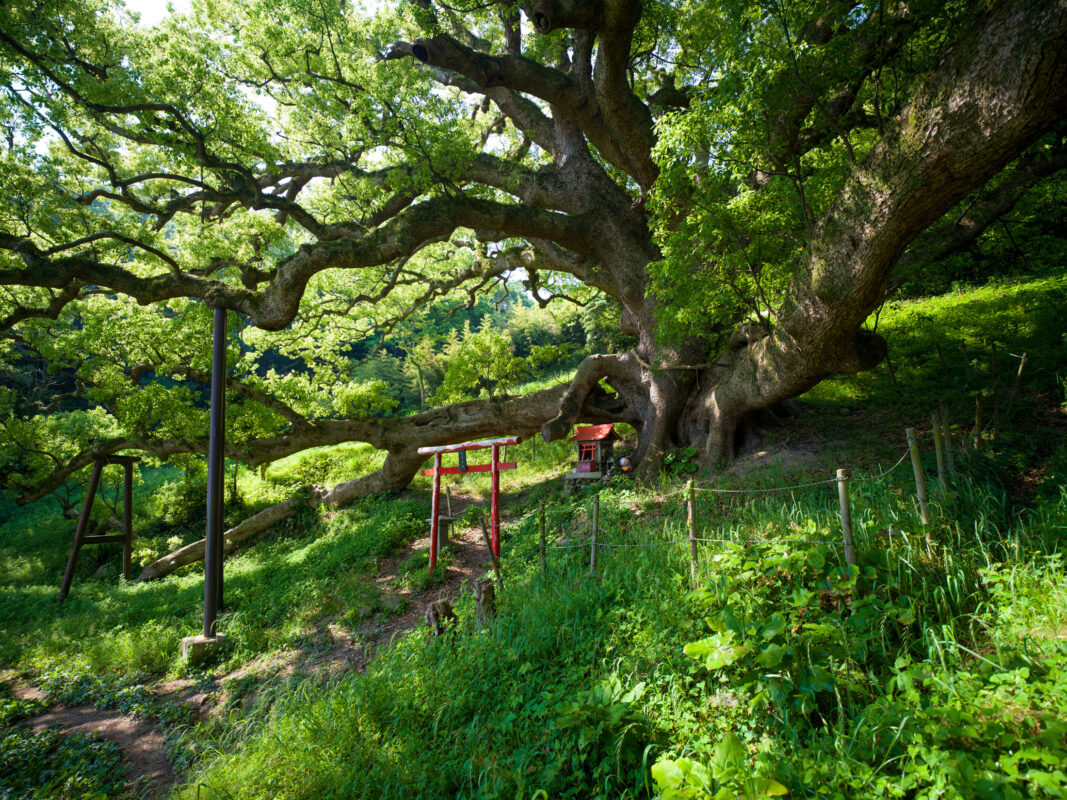
The tree is considered a veritable deity by the islanders. It’s said to be over 1,200 years old and still growing! It’s the tallest in Kagawa Prefecture, but surely still intends to break records. A small Shinto shrine sits at its base.
Abandoned villages
I venture on to the highest point of the island. Trees hide the view, and insects scratch me, bite me and tear me apart. Phew, what’s your problem? Can’t you tackle the tanuki instead!? To avoid ending up as dog meat I head back down sharpish, along an old path that doesn’t seem to be used at all. Fewer bugs … but now there’s snakes waving and dancing in front of me! Rather them than the insects, for now.
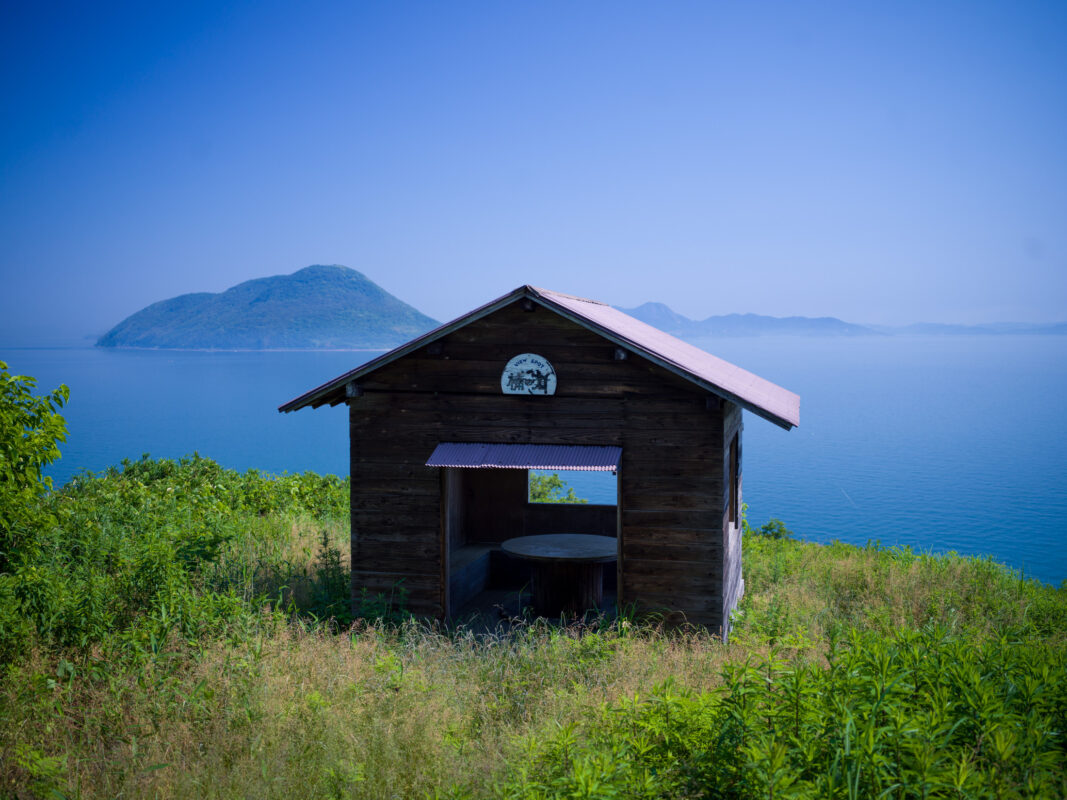
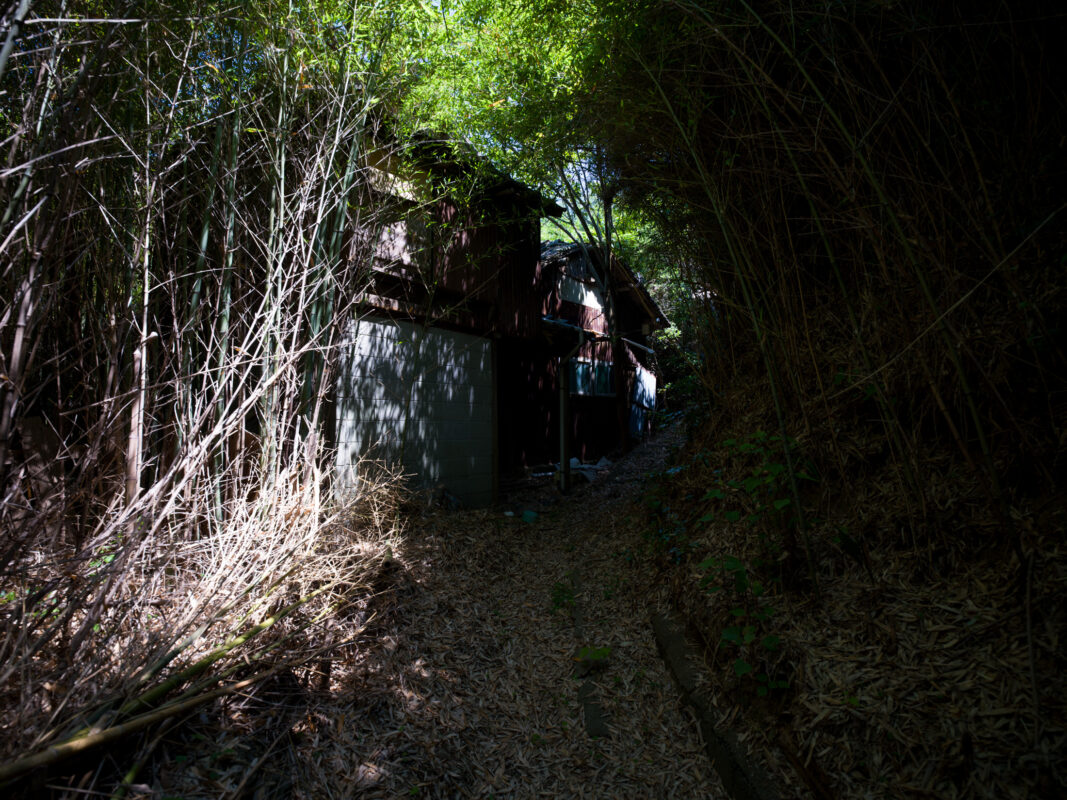
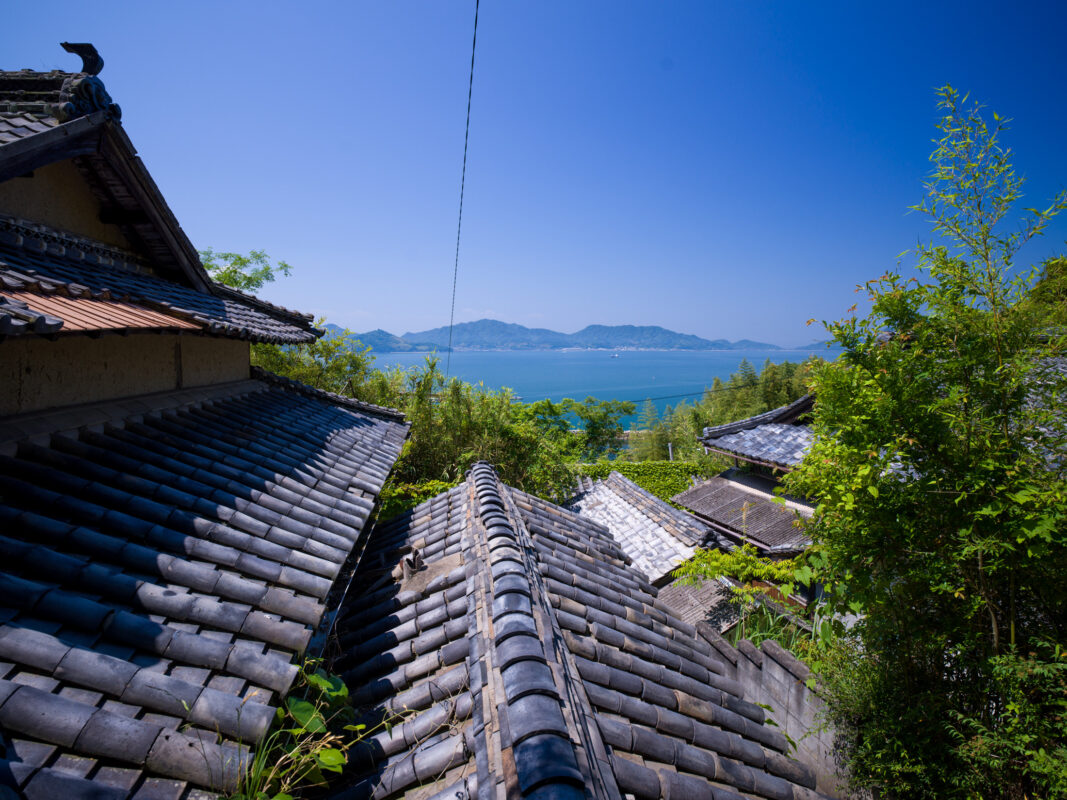
I’d like to know more about these desolate villages, but their stories seem to be hidden in their old cupboards and attics. No time to dig unfortunately, because there’s work to be done at MeowBNB. In less than two hours, I have to get back. You’re disappointed, and so am I; that’s how it is! 😘
The ume-baka tombs
On the way round the island, I come across some strange ume-baka (burial grave) tombs. There were some in the village too (as below), and with so many felines around it looked more like a cattery than a graveyard! These tombs are precious and indicative of an ancestral practice. In the western Japanese past, the custom of ryobo was to have two graves side by side. One for burying the deceased and the other for their soul. The second had a reed roof to deflect the heat.
Spot the kitties in the photos above? Apart from perpetuating this double-grave tradition, the Shishijima tombs, bordered by colourful huts called tamaya, are unique. The remaining islanders take care of them so let’s hope this tradition continues for a long time to come.
Mr Tanaka’s goat
The island mascot is the goat! Just now there’s four of them, in order of age Momo, Nana, Sakura and Koro. When not in their huts, you’ll find them grazing in the nearby fields.
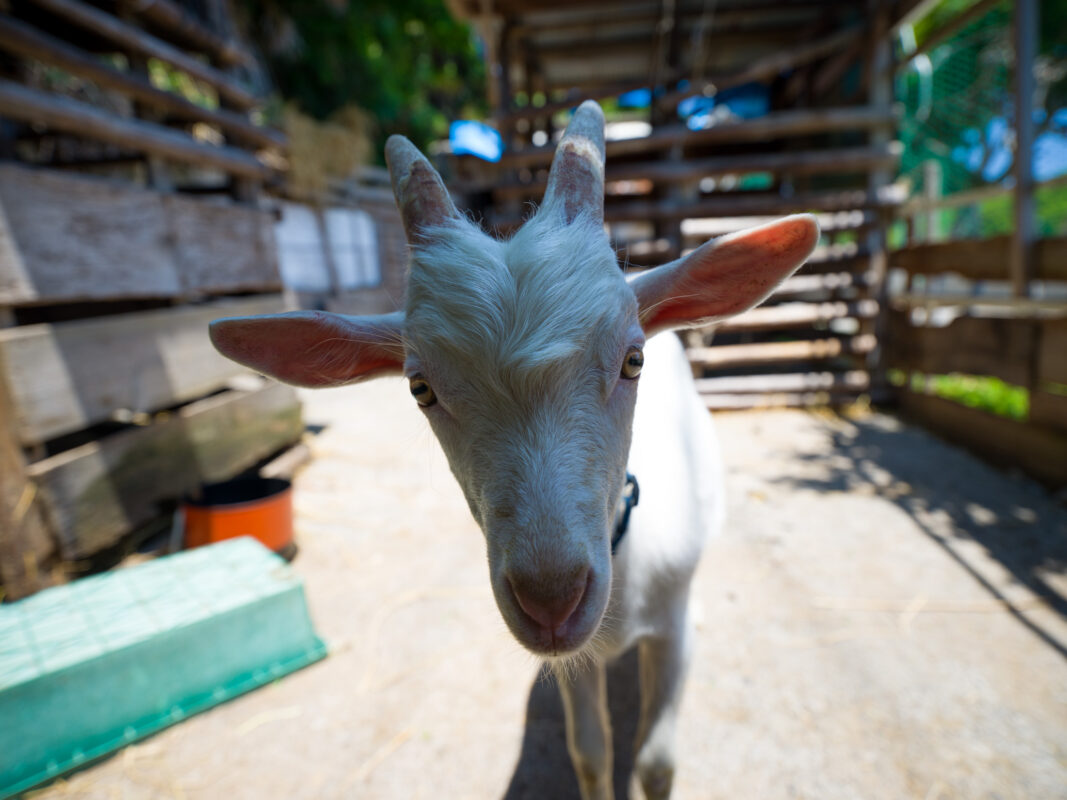
The locals make a big cheese of you, but …
couldn’t you make one for me instead? 😛
Just about everybody I passed told me: “Meow-san, have you visited our goats-chan? They are fantastic! They poop Ferrero chocolate! They dance the carioca!”
Ah, the animals in Japan … It’s either – and often! – a real butcher’s shop, or … a love story. Nobody cares what animals want anyway. Even if it’s very likely and simply a happy medium in which humans would stop wanting to control absolutely everything! 😝
Calm down, cuppa tea!
But the island does have one cafe run by a couple who fell in love with the magic of Okusu (the giant tree, remember). This cafe is in an traditional house with a retro 1950s vibe. They offered me everything, so I imagine it’s more of a centre of hospitality and gossip hub. I’m feeling at home here. 😌 A young couple I meet who’ve just moved to the island tell me they grow organic vegetables, then offer a catering service based on Italian dishes, 100% organic of course!
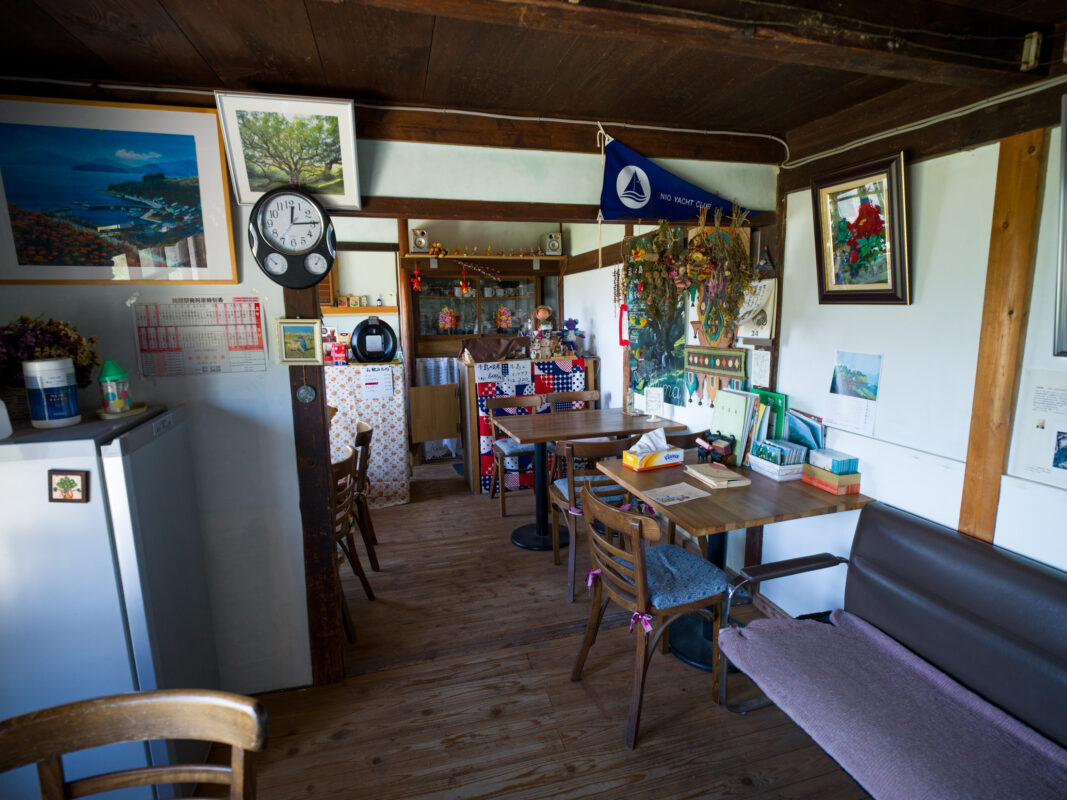
The guy who brought me over came to chat with us and it seemed like time might soon stand still. So I stand too, go see one last shrine and prepare to rejoin dry land … if there is such a thing in Japan! 🤯
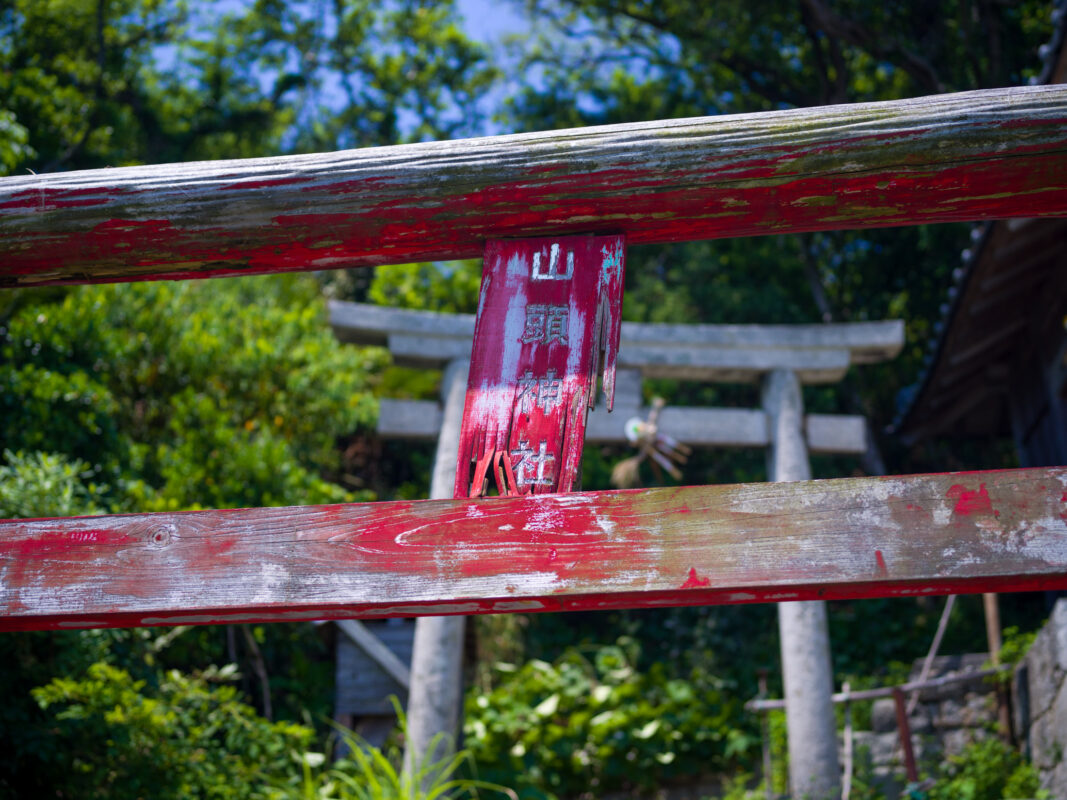
There’s getting to be quite a few islands on this website. From the ghost island of Gunkanjima to the almost inaccessible Aogashima, the island of free-ranging horses Nishinoshima, the island of Niijima with the most beautiful beaches in Japan, or even the northernmost Japanese island Rebun, among others ! Wouldn’t that be enough for a book? Sure, but give me time to explore more! There’s one iconic island that this site is really missing and that’s Yakushima, but if you really want a good laugh check out my old blog: Yakushima : Chassés par Mononoké. I’ll be heading back soon! Meantime, tell me of your favourite Japanese islands! I want to know all! 🏝
And for more awesome content about Japan, follow Jordy Meow on Instagram ! 🎵

